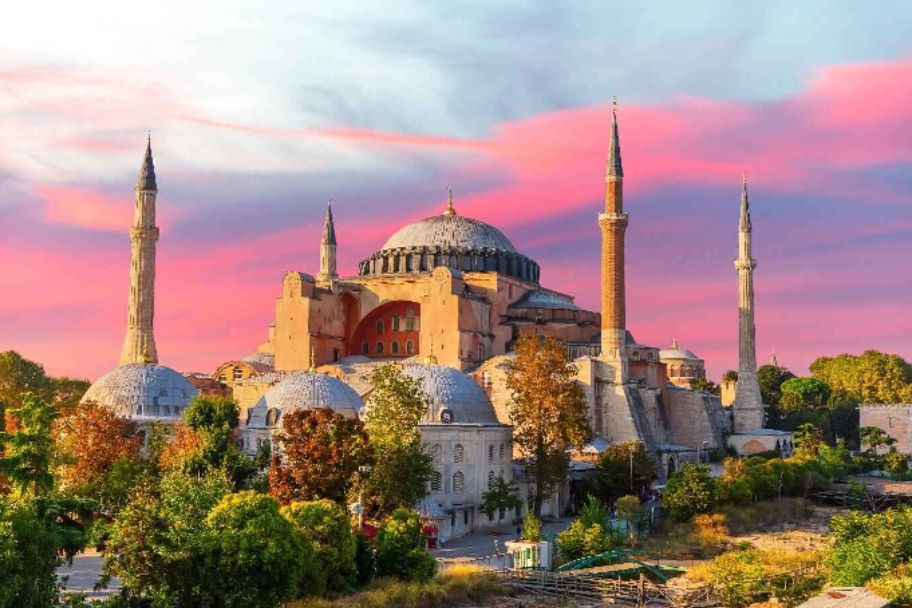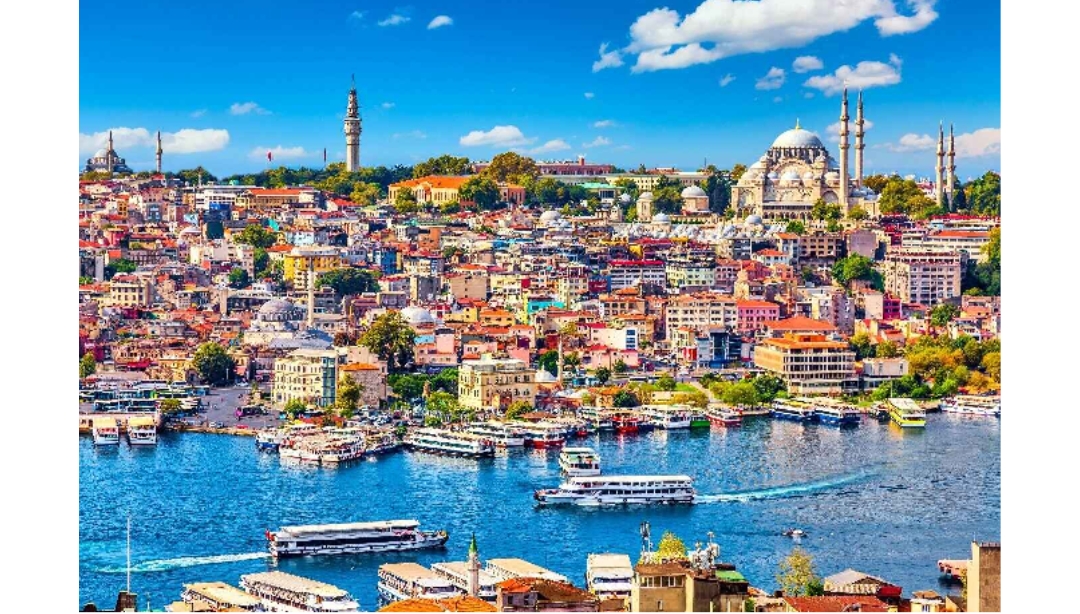Hagia Sophia, an architectural marvel and a symbol of Istanbul’s rich history, stands as a testament to the city’s diverse cultural heritage. Originally built as a cathedral in the 6th century, it has served various roles throughout history, including a mosque and now a museum. Family-friendly tours of Hagia Sophia offer a unique opportunity for families to explore this magnificent site together, fostering learning and appreciation for history in an inspiring setting.
The Historical Significance of Hagia Sophia
Hagia Sophia, or Ayasofya in Turkish, was commissioned by Emperor Justinian I and completed in 537 AD. It was the largest cathedral in the world for nearly a thousand years and is renowned for its massive dome, intricate mosaics, and stunning architecture. The building’s history reflects the evolution of Byzantine and Ottoman empires, making it a vital site for understanding the cultural and religious transformations that have shaped Istanbul. Family-friendly tours provide context to this rich history, making it accessible and engaging for visitors of all ages.
Engaging Family-Friendly Tour Options
When planning a visit to Hagia Sophia, families can choose from various guided tour options tailored to different age groups and interests. These tours often include interactive elements, storytelling, and hands-on activities that captivate children and adults alike. Some popular options include:
Guided Tours with Expert Historians
Many family-friendly tours feature knowledgeable guides who specialize in engaging young audiences. These guides use storytelling techniques to bring the history of Hagia Sophia to life, sharing fascinating anecdotes and historical facts that resonate with children. By making the tour interactive, guides encourage questions and discussions, fostering a deeper understanding of the site’s significance.
Thematic Tours for Kids
Thematic tours designed specifically for children often focus on specific aspects of Hagia Sophia, such as its architecture, art, or historical figures. These tours may include scavenger hunts, quizzes, or creative activities that keep children engaged while learning about the site. For instance, a tour might focus on the stunning mosaics, allowing kids to identify different figures and learn about their historical context.
Educational Benefits of Visiting Hagia Sophia
Hagia Sophia Tours as a family offers numerous educational benefits. It provides a hands-on learning experience that goes beyond textbooks, allowing children to connect with history in a meaningful way. Here are some key educational advantages:
Enhancing Cultural Awareness
Hagia Sophia is a melting pot of cultures, reflecting the influences of both Byzantine and Ottoman empires. By exploring this historic site, families can gain insights into the diverse cultural heritage of Istanbul and the broader world. This exposure fosters cultural awareness and appreciation, encouraging children to embrace diversity and understand different perspectives.
Encouraging Critical Thinking
Family-friendly tours often include discussions and activities that promote critical thinking. As children learn about the historical significance of Hagia Sophia, they are encouraged to ask questions, analyze information, and form their own opinions. This interactive approach nurtures curiosity and helps develop essential skills that extend beyond the museum.
Plan Ahead
Before your visit, research different tour options and choose one that aligns with your family’s interests and age group. Booking in advance can help ensure availability and allow you to select a time that works best for your family.
Arrive Early
Hagia Sophia can get crowded, especially during peak tourist seasons. Arriving early allows you to enjoy a more peaceful experience and gives your family time to explore the surrounding area before the tour begins.
Engage with the Guide
Encourage your children to ask questions and engage with the tour guide. This interaction not only enhances their learning experience but also fosters a sense of curiosity and excitement about history.
Art and Architecture Tours of Hagia Sophia: Marvel at Byzantine Splendor
Hagia Sophia, a masterpiece of Byzantine architecture, stands as a testament to the artistic and architectural achievements of its time. Located in Istanbul, Turkey, this iconic structure has served various purposes throughout its history, from a cathedral to a mosque and now a museum. Art and architecture tours of Hagia Sophia offer visitors a unique opportunity to explore its rich history, stunning design, and the intricate details that make it one of the most significant landmarks in the world. This article delves into the various aspects of Hagia Sophia that are highlighted during these tours, showcasing its grandeur and historical importance.
A Brief History of Hagia Sophia
Constructed between 532 and 537 AD under the orders of Emperor Justinian I, Hagia Sophia was originally built as a cathedral and served as the central church of the Eastern Orthodox Church for nearly 1,000 years. Its architectural design was revolutionary for its time, featuring a massive dome that seemed to float above the central nave. Following the Ottoman conquest of Constantinople in 1453, Hagia Sophia was converted into a mosque, which led to the addition of minarets and Islamic calligraphy. In 1935, it was secularized and transformed into a museum, allowing people from all walks of life to appreciate its historical and architectural significance.
Architectural Marvels of Hagia Sophia
One of the main attractions of Hagia Sophia is its architectural brilliance. The building is renowned for its massive dome, which spans 31 meters in diameter and is supported by pendentives—curved triangular sections that transition from the square base to the circular dome. This innovative design was a significant advancement in architecture and influenced the construction of many subsequent structures, including the Blue Mosque in Istanbul. During tours, visitors can marvel at the dome’s intricate mosaics, which depict various religious figures and scenes, showcasing the artistic skills of Byzantine craftsmen.
The Stunning Mosaics
Hagia Sophia is adorned with some of the most exquisite mosaics in the world, many of which date back to the Byzantine era. These mosaics are not only artistically significant but also hold deep religious meaning. Among the most famous is the Deesis mosaic, which features Christ flanked by the Virgin Mary and John the Baptist. This artwork exemplifies the Byzantine style, characterized by its use of gold backgrounds and intricate detailing. During art and architecture tours, guides provide insights into the symbolism behind these mosaics, explaining their significance in the context of Byzantine theology and culture.
The Blend of Cultures
One of the unique aspects of Hagia Sophia is its ability to reflect the blend of cultures that have influenced its history. The transition from a Christian cathedral to an Islamic mosque resulted in a fascinating fusion of architectural styles and artistic elements. Visitors on tours can observe how Christian iconography coexists with Islamic calligraphy and motifs, creating a harmonious yet complex visual narrative. This blend of cultures is a testament to the city of Istanbul itself, which has long been a crossroads of civilizations.
The Interior Design and Decoration
The interior of Hagia Sophia is as breathtaking as its exterior. The vast nave is illuminated by natural light streaming through the numerous windows, creating a serene atmosphere. The use of marble, gold, and intricate stonework enhances the grandeur of the space. During tours, visitors can appreciate the craftsmanship that went into the creation of the columns, arches, and decorative elements. The rich colors and textures of the materials used in the construction contribute to the overall splendor of the building, making it a feast for the eyes.
The Role of Hagia Sophia in Modern Times
Today, Hagia Sophia continues to play a significant role in the cultural and religious landscape of Istanbul. While it is no longer a functioning mosque, it remains a site of pilgrimage and reverence for many. The building’s status as a museum allows people from around the world to explore its history and appreciate its beauty. Art and architecture tours of Hagia Sophia provide an opportunity for visitors to engage with its past and understand its significance in both Christian and Islamic traditions.
Conclusion
Art and architecture tours of Hagia Sophia offer a captivating journey through history, showcasing the architectural brilliance and artistic achievements of the Byzantine era. From its stunning dome to its intricate mosaics, Hagia Sophia stands as a symbol of cultural exchange and artistic innovation. Visitors are not only treated to a visual spectacle but also gain a deeper understanding of the historical context that shaped this iconic structure. Whether you are an art enthusiast, a history buff, or simply a curious traveler, a tour of Hagia Sophia promises to be an unforgettable experience that allows you to marvel at the splendor of Byzantine architecture.






























